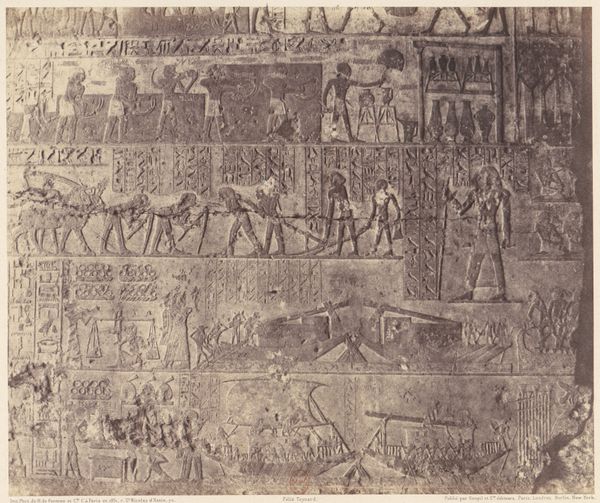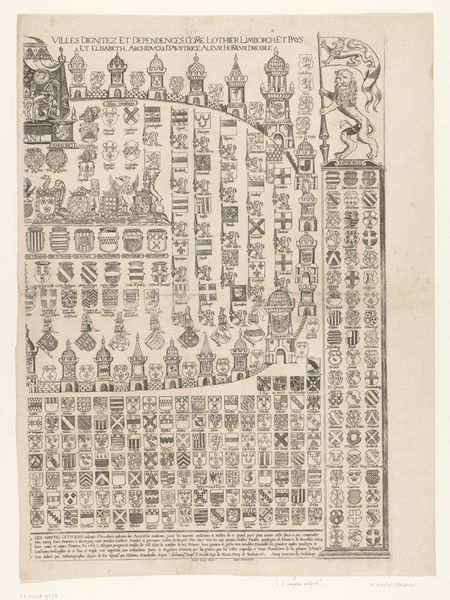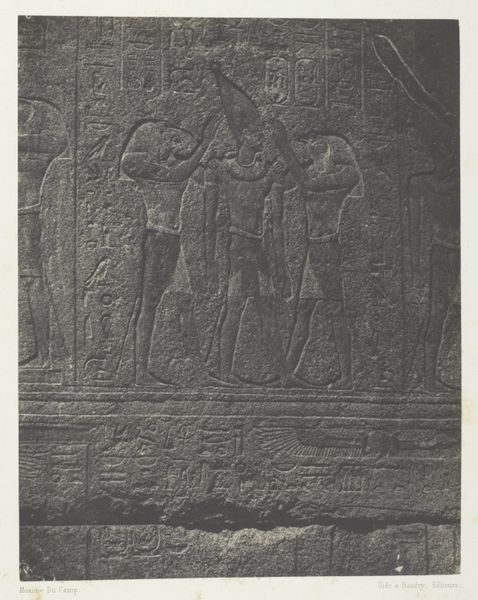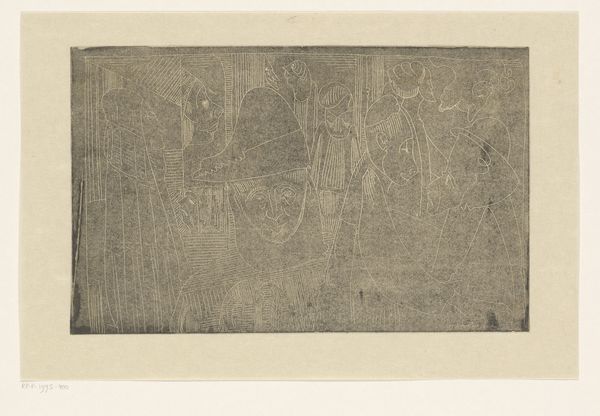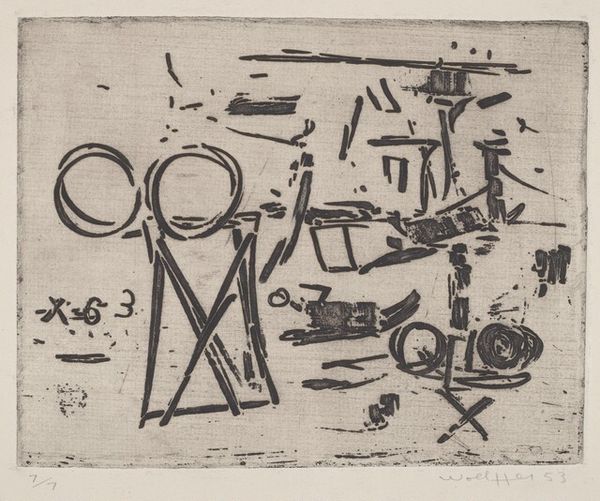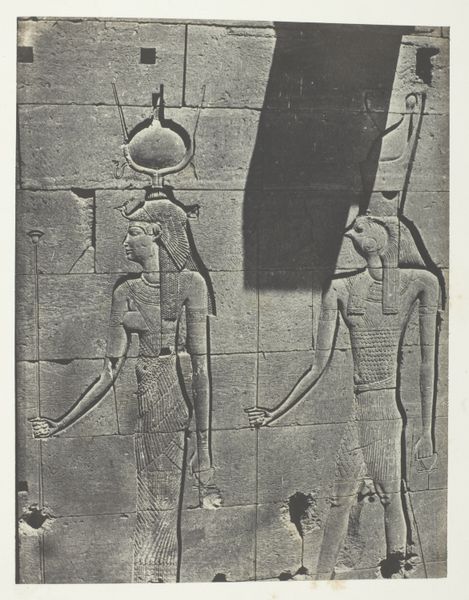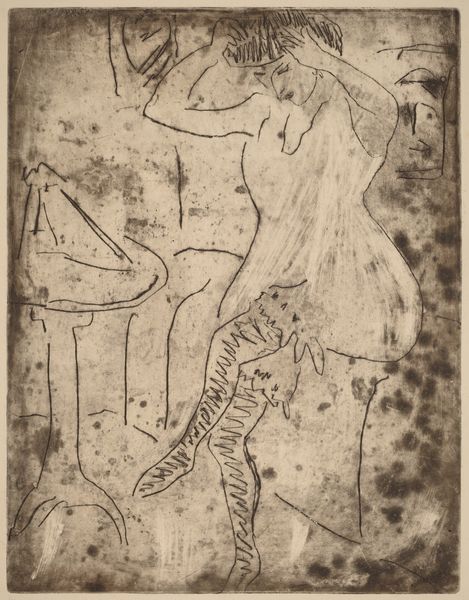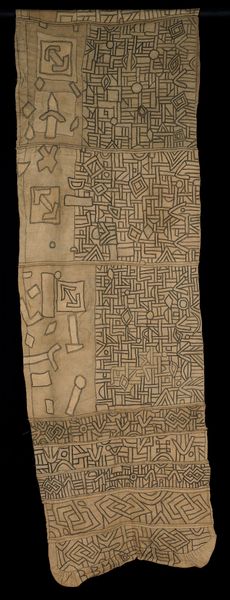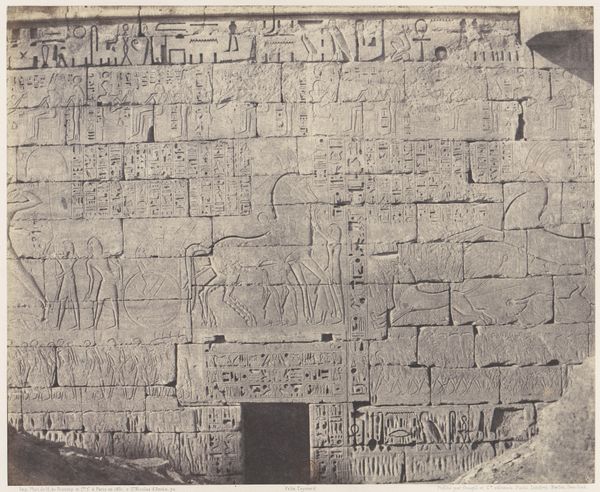
Grand Temple d'Isis à Philoe, Second Pylône; Nubie Possibly 1849 - 1852
0:00
0:00
print, paper, photography
#
16_19th-century
# print
#
landscape
#
ancient-egyptian-art
#
paper
#
photography
#
egypt
#
ancient-mediterranean
#
france
Dimensions: 22.9 × 16.6 cm (image/paper); 43 × 29.9 cm (album page)
Copyright: Public Domain
This is Maxime Du Camp's photograph of the Grand Temple d'Isis à Philoe, Second Pylône in Nubie, an albumen print from the 1850s. The monumental scale of the temple wall dominates the composition, its surface a tapestry of carved figures and hieroglyphs. The photograph's sepia tones and the texture of the stone create a sense of antiquity and permanence. Du Camp's photograph isn't just a neutral record; it actively shapes how we perceive this ancient site. The close-up perspective flattens the relief, emphasizing the intricate patterns etched into the stone. This flattening effect can be read through structuralist lenses: The photograph transforms a three-dimensional space into a two-dimensional plane, inviting us to decode the visual language of Egyptian art. Consider the formal arrangement of the figures, their gestures frozen in time. The photograph captures not only the image of the temple but also the cultural codes embedded within its artistic representation. Du Camp's work encourages us to view the temple as a complex sign, layered with meanings that extend beyond its immediate aesthetic appeal.
Comments
No comments
Be the first to comment and join the conversation on the ultimate creative platform.

